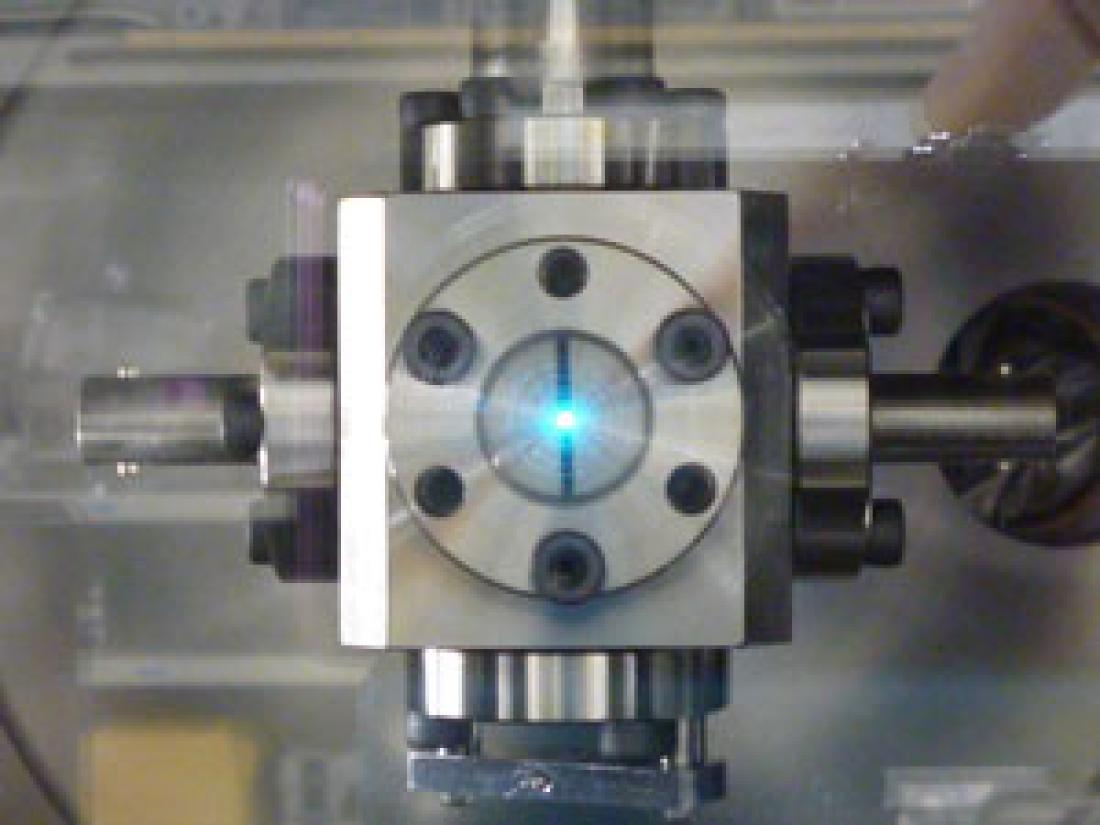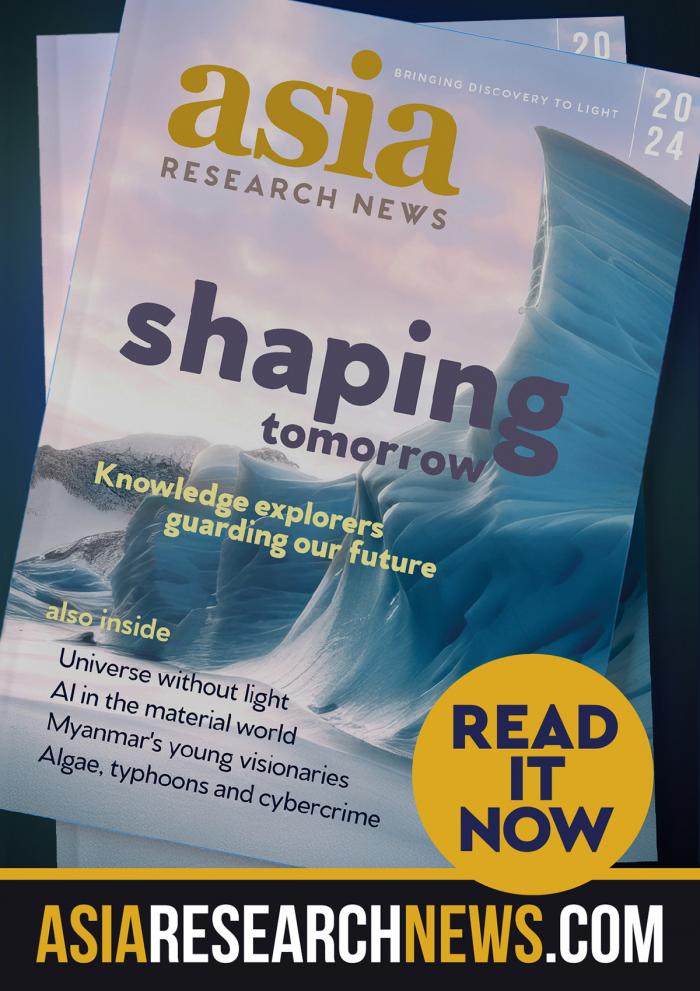Figure 1: A photograph of the custom-built laser chamber, which receives simultaneously a pulse of helium gas and a pulse from RIKEN’s free-electron laser, which is known as the SPring-8 Compact SASE Source (SCSS). The resulting blue–green superfluorescence is visible.
A variety of imaging technologies rely on light with short wavelengths because it allows very small structures to be resolved. However, light sources which produce short, extreme ultraviolet or x-ray wavelengths often have unstable emission wavelength and timing. Now, by illuminating a gas with a powerful laser, a research team in Japan has demonstrated a light source that may solve many of these problems. The research was published by Mitsuru Nagasono, from the RIKEN SPring-8 Center in Harima, and his colleagues from RIKEN and three other institutes.
The team’s approach relies on superfluorescence, which occurs when the distance between two or more excited atoms is less than the wavelength of light they emit when they relax. This short distance causes the atoms to relax collectively, so that the peaks and troughs in the light waves produced by each atom occur simultaneously in the same location. The resulting ‘coherent’ superfluorescent emission is of a high quality, with high peak intensity and short duration.
Nagasono and colleagues observed superfluorescence when they illuminated helium gas with an energetic laser pulse from the RIKEN extreme ultraviolet light (EUV) free-electron laser. Previous work by other researchers with free-electron lasers characterized materials by monitoring the charged particles that were emitted on illumination by the laser. Rather than monitoring charged particle emission, Nagasono and his team monitored fluorescence. Also, in distinction from previous work, they kept their sample at relatively high densities to ensure that they satisfied the conditions for superfluorescence.
To conduct the experiment, the team designed and built a gas chamber with a valve that accepted a high-density pulse of helium gas at the precise moment that a free-electron laser pulse arrived. They observed that this produced a directional blue–green fluorescence (Fig. 1). By measuring how the pulse changed with atom density and with time, they confirmed that it resulted from superfluorescence. In addition, the conversion efficiency of incident to emitted light was consistent with the efficiencies expected from superfluorescence.
Although the observed superfluorescence was in the visible spectrum, x-ray superfluorescence should be achievable by illuminating a different material with the laser, and by changing the energy of the laser beam. “We envision using superfluorescence to provide fully coherent pulses at particular x-ray wavelengths,” says Nagasono, “allowing element-specific x-ray imaging with much-improved sensitivities.” In addition, the results suggest that superfluorescence may have occurred in previous experimental work based on the free-electron laser, which would require the re-interpretation of some data.
Reference: (download link to original article below)
Nagasono, M., Harries, J.R., Iwayama, H., Togashi, T., Tono, K., Yabashi, M., Senba, Y., Ohashi, H., Ishikawa, T. & Shigemasa, E. Observation of free-electron-laser-induced collective spontaneous emission (superfluorescence). Physical Review Letters 107, 193603 (2011).



